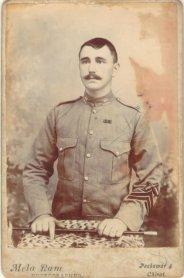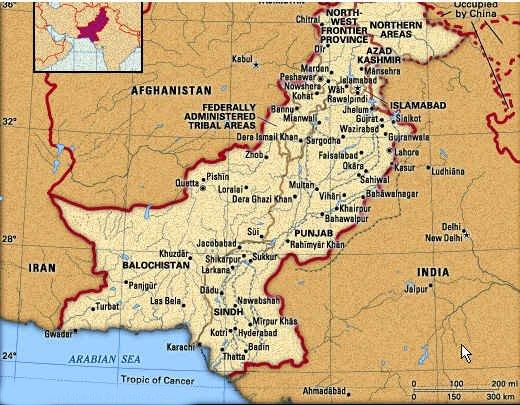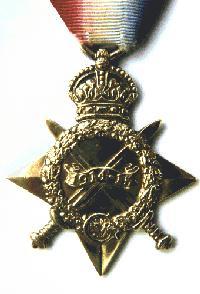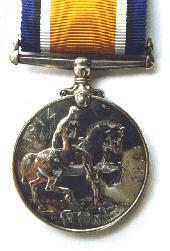|
|
|
|
|
|
|
|
|
|
|
|
|
|
|
|
Queens (Royal West Surrey) Regiment
6th Battalion

A Personal History of Joseph Wheeler
|
Peshawar, where the photo was taken, is a City, capital of the North-West Frontier province of Pakistan, its name meaning Frontier Town. It is on the Bara River, a tributary of the Kabul, 240 miles North West of Lahore; strategically important because of its location 9 miles from the southern entrance to the Khyber Pass. Tirah is a mountainous tract in west-central North-West Frontier province, Pakistan. It lies on the Afghanistan-Pakistan border between the Khyber Pass and Khanki Valley, northwest of Kohat town. It is inhabited mainly by Afridi and Orakzay Pashtun tribes.
On completion of his service in India in 1906 he left the army only to rejoin in 1914.
He and his family were living in North Warnborough near Odiham in September 1910. By November 1911 they had moved to Western Cross and were still living there in 1913. During this period we know he was a shoe maker as the Attestation papers have this as his profession. They were living in a house for 3 shillings a week (about 15 pence or 20 US cents).
He must have volunteered for the Army in the First World War as his date of enlistment according to the Silver War Badge award listing shows 18th September 1914. He was examined for fitness to join up in Odiham but enlisted in Guildford Surrey. He shows Susie Dean as his next of kin living at Western Cross near Odiham. The attestation papers say that he was posted into the 3rd Battallion on 18-9-1914. They also give us a very good insight to his physical appearance at the age of 36 when he enlisted. He was 5 foot six inches tall, weight 136lb with a chest measurement of 36 1/2 inches with an expansion of 3 inches.
At the time it was mandatory for the soldiers to write their will before they left for active service (see left), a chilling thing to have to do. Joseph wrote a will which went “In the event of my death I will give the whole of my property and effects to my wife Mrs Wheeler 125 Sherwood Street, Oxford Road Reading Berks. On the 24th April 1915 he was posted to the 6th Battallion Queens Regiment. This battalion was in the 37th Brigade in the 12th Eastern Division. He was made Corporal on 18th May 1915. and by the 26th August 1915 he was unpaid Acting Lance Sergeant. His payment for this came on 3rd November 1915 and he was confirmed as Lance Sergeant on the 14th. By the 20th he was appointed Acting Sergeant and on 1st January 1916 he was promoted to full Sergeant. The 6th Battallion was posted to France on 31st May 1915. I have copied the first two months of the War Diaries (a daily log kept by the Officer Commanding) in order to get a flavour of the time.The Queens fought in the Battle of the Somme twice, the first time being the second of July 1916. On the 5th May 1917 he was posted as being for Kings regulations and his full discharge came through on 8th August 1917. He was permanently excluded from re-examination under the Military Service Act of 1917, his condition was said to have been “Aggravated by active service”. It gives an address of 32 Laburnam Road Chobham, Chertsey as being his address on discharge. Just under that entry is the wording “Discharged under para 392 (XVI) of Kings regulations on 30-10-1914”. He received a Silver War Badge, number 126083, which was issued to him on his discharge from Active Service. The Silver War Badge was given for injuries received in action. The award which was dated 31st July 1917 signed in Hounslow, states that he enlisted on 18th September 1914 and was discharged 8th August 1917. In total he had served 2 years 325 days towards his pension.
His Medals for the Great War include a 1914 - 1915 Star; on the reverse of this medal is inscribed "G-2398 Cpl. J Wheeler, The Queen Regiment". He was also presented with the World War I Victory medal which shows on the back the wording "The great war for Civilization 1914 - 1919". Finally he won the British War Medal which depicts a man on horseback with a skull at the bottom of the medal.
After his formal discharge on the 8th August 1917 from the Barracks B O in Oxford Road Reading. he joined the Royal Engineers (Territorial Force) in the rank of Lance Sergeant. He was given a pension of 16 shillings and three pence a week (92p) to be reviewed in a years time. The reason for the disability was Aneurysm of the Arch of the Aorta. By the time of his discharge the family had moved to 125 Sherwood Street Reading where they resided until at least 1919.
Just a few notes on Galipolli
|

 This medal would have been for the period 1895 to 1902.
On the first September 1898 there was an listing made which showed Private J Wheeler as being entitled to the Indian General Service medal. He was not in possession of the India Medal of 1895 but he was entitled to the Punjab and Tirah clasps.
This medal would have been for the period 1895 to 1902.
On the first September 1898 there was an listing made which showed Private J Wheeler as being entitled to the Indian General Service medal. He was not in possession of the India Medal of 1895 but he was entitled to the Punjab and Tirah clasps.
 He had dark complexion with dark brown eyes and hair. He had tattooing on both forearms with a scar on his left cheek and a mole on his left shoulder. He was Church of England.
He had dark complexion with dark brown eyes and hair. He had tattooing on both forearms with a scar on his left cheek and a mole on his left shoulder. He was Church of England. 

